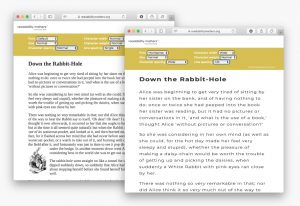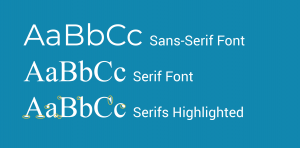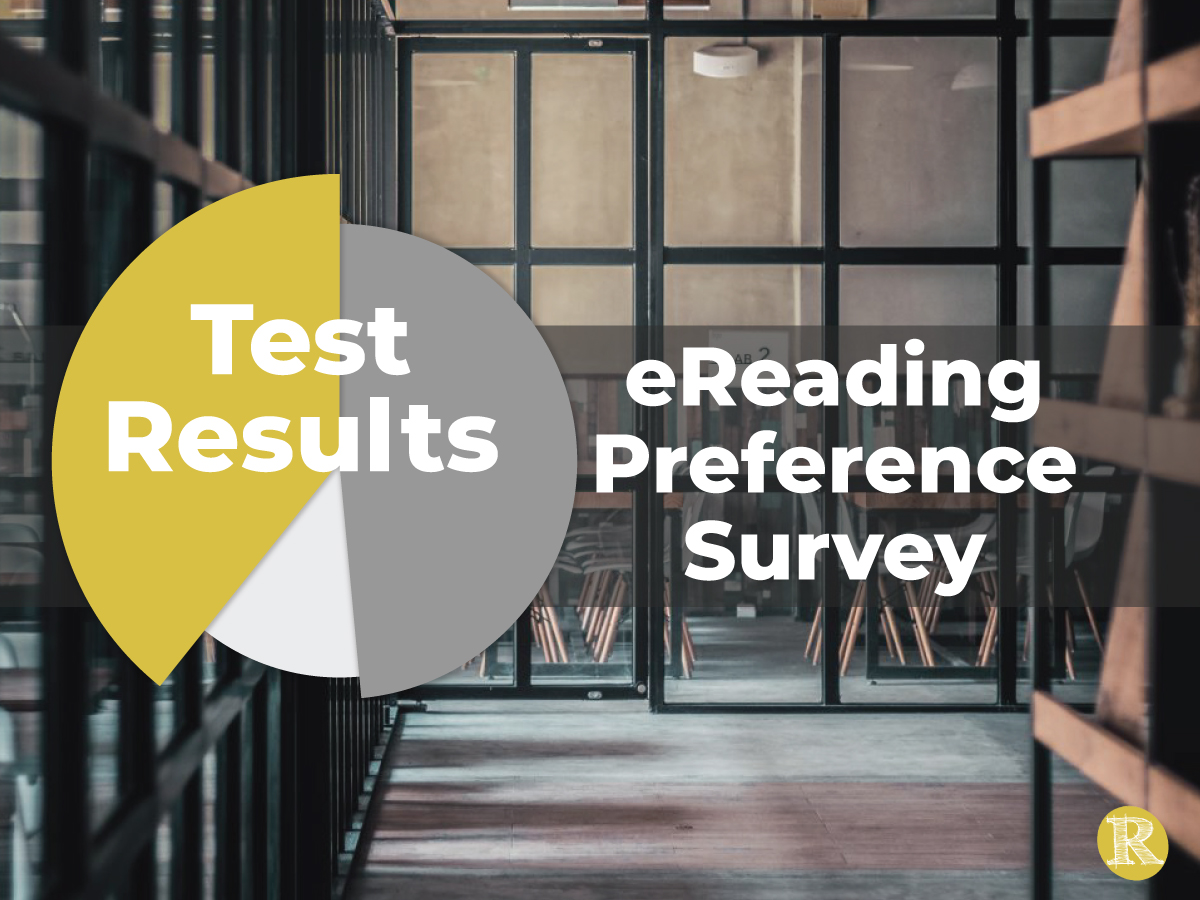University Student Survey of Reading Format Preference
Readability Matters invited a professor at a top 75 US University to conduct a quick survey of reading format preference. Thirty-seven students aged 18-21 elected to participate. They were invited to play in the Readability Matters’ Sandbox and to design a format they would like to use to read.
The question remains,
are there 6 best formats for reading, or an infinite set?
Surprisingly, when given access to 6 Readability Features with several options each, the 37 students created 30 unique formats as they created their personal favorite format for reading.

Interesting Survey Results
- There was an overwhelming preference to personalize text format, 36 of 37 students changed at least one Readability Feature
- 30 unique formats were generated by the 37 students
 43% preferred the default font with serifs; 57% preferred one of the sans serif fonts offered
43% preferred the default font with serifs; 57% preferred one of the sans serif fonts offered- After making different base font selections, 30% chose the “narrow” setting, to reduce the character spacing
- 24% chose to lighten the weight of the font (Readability Matters has observed readers have strong preferences for heavy and light fonts; more research is needed to examine performance differences using this Readability Feature.)
- 59% preferred 1.25 line spacing
In a free-text comment field, one student commented that he preferred page-turning to scrolling; he reports losing his place when scrolling. Both the Amazon Kindle app and Apple iBooks offer user choice related to this feature. A second student noted his impression that tighter character spacing allowed him to keep his place.
If preference is an indicator, this quick survey indicates there will be more “best reading formats,” rather than less.
Impact to Readability Work
Readability Matters values research-informed decision-making. We invite researchers across disciplines to join the effort to explore the impact of Readability Features.
Additional research is needed in the value of specific features, the relationship of features (as character spacing goes up can size go down?), and the relationship between preference and reading performance.
Reading research is complex. Many factors influence reading speed beyond text formats. The reading level of the content and reader interest have been shown to slow reading speed, while background knowledge and better text formats have been shown to increase speed. If a user enjoys a given format over another, will they read longer, even if not faster?
Visit the Readability Features Sandbox; what are your preferred settings?




